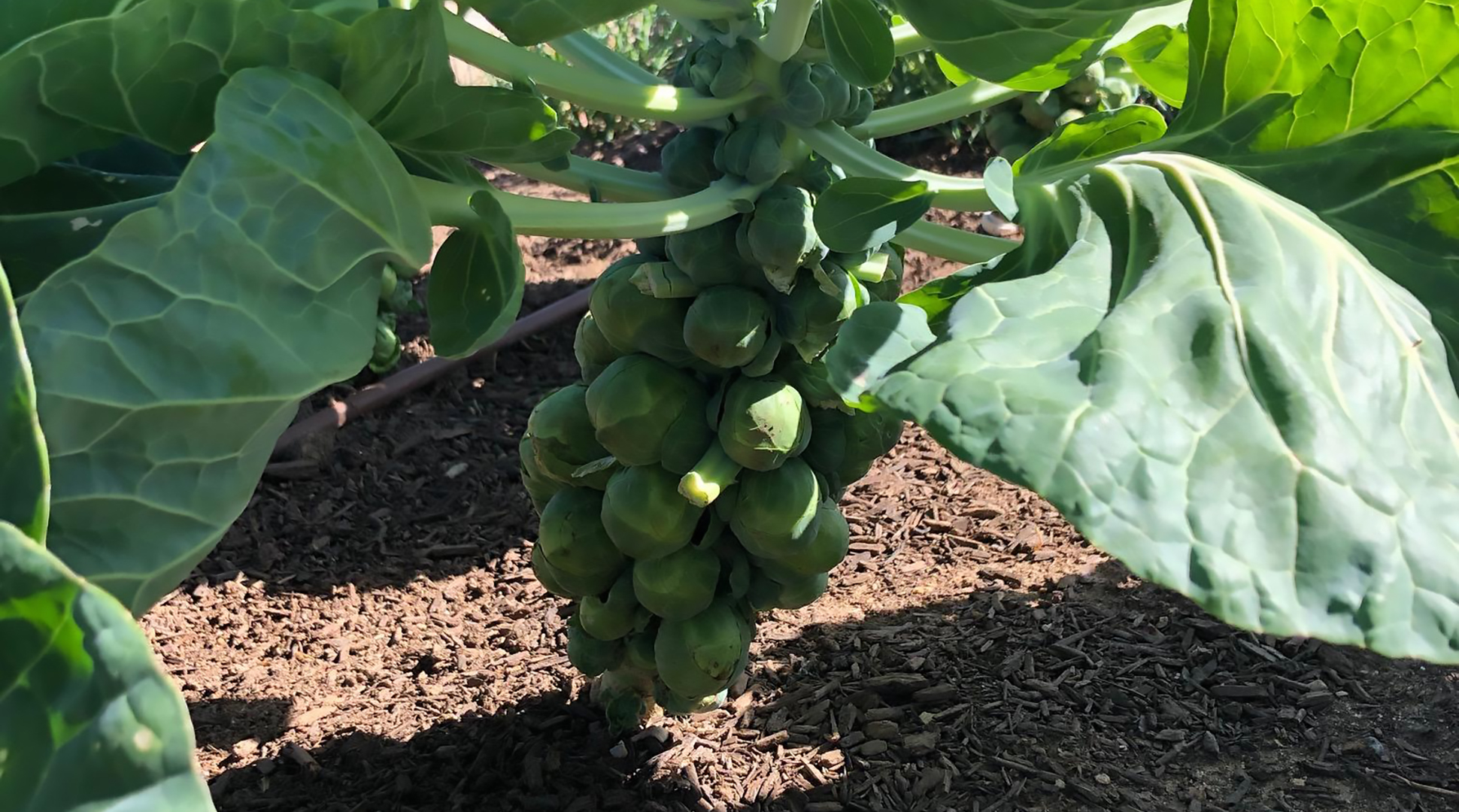By Esther E. McGinnis, horticulturist, NDSU Extension
As a child, I wouldn’t eat vegetables for over a decade. My poor parents spent countless hours at the dinner table trying to convince me to eat a variety of foods. After becoming a teenager, I finally discovered the joy of eating freshly grown garden produce.
Despite turning over a new leaf, I avoided trying Brussels sprouts for over 30 years because of their reputation as a stinky, mushy and bitter vegetable.
One day, I was dining with a client at a restaurant in the Twin Cities. The chef served roasted Brussels sprouts in a balsamic glaze as a side dish. I gingerly tried this detested vegetable and proceeded to clean my plate.
Brussels sprouts have a bad reputation for a couple of reasons. First, many people don’t know how to prepare to optimize their flavor. The stereotypical cooking method is to boil them into a gray, soggy mess. A more flavorful method is to roast them in the oven in a little oil with your favorite seasonings such as garlic salt and parmesan. They become crispy and caramelized when baked.
Another reason that Brussels sprouts have a bad reputation is that older cultivars used to taste bitter. In the 1990s, Dutch scientist Hans van Doorn isolated the compounds responsible for the bitter flavor. As a result, seed companies were able to breed and select cultivars that contained less of these compounds.
Fall is a great time to give Brussels sprouts a first try (or a second chance) as they will be coming into season at farmers markets around the region after the first frost. Exposure to frosts enhance the flavor of the sprouts.
If you discover that you adore the complex flavors as much as my family does, consider growing them in your garden next year.
Brussels sprouts are a long-season crop that are timed to mature after the first frosts. Most gardeners in the region transplant seedlings into the garden in late May or early June but this is dependent upon the cultivar’s days to maturity. Transplants may be purchased from local nurseries or seeds sowed indoors 4 to 6 weeks before transplanting.
To achieve a bountiful crop, irrigate the plants during dry spells and fertilize before sprout formation. It is normally a low-maintenance crop with the exception of insect pests.
The dreaded cabbage worms and loopers are the biggest pests. Brussels sprouts are in the same plant family as cabbage, broccoli, cauliflower, and kale. Consequently, they attract a lot of the same pests. Fortunately, these insects can be sustainably managed using products that contain Bacillus thuringiensis (B.t.).
Harvest after frost exposure when the individual sprouts are firm when pinched. Picking can continue until the temperature reaches the mid-twenties. Also keep in mind that bigger is not better. The ideal sprout size is in between one and two inches.
Happy gardening! I double dare you to eat and grow this delicious crop.
